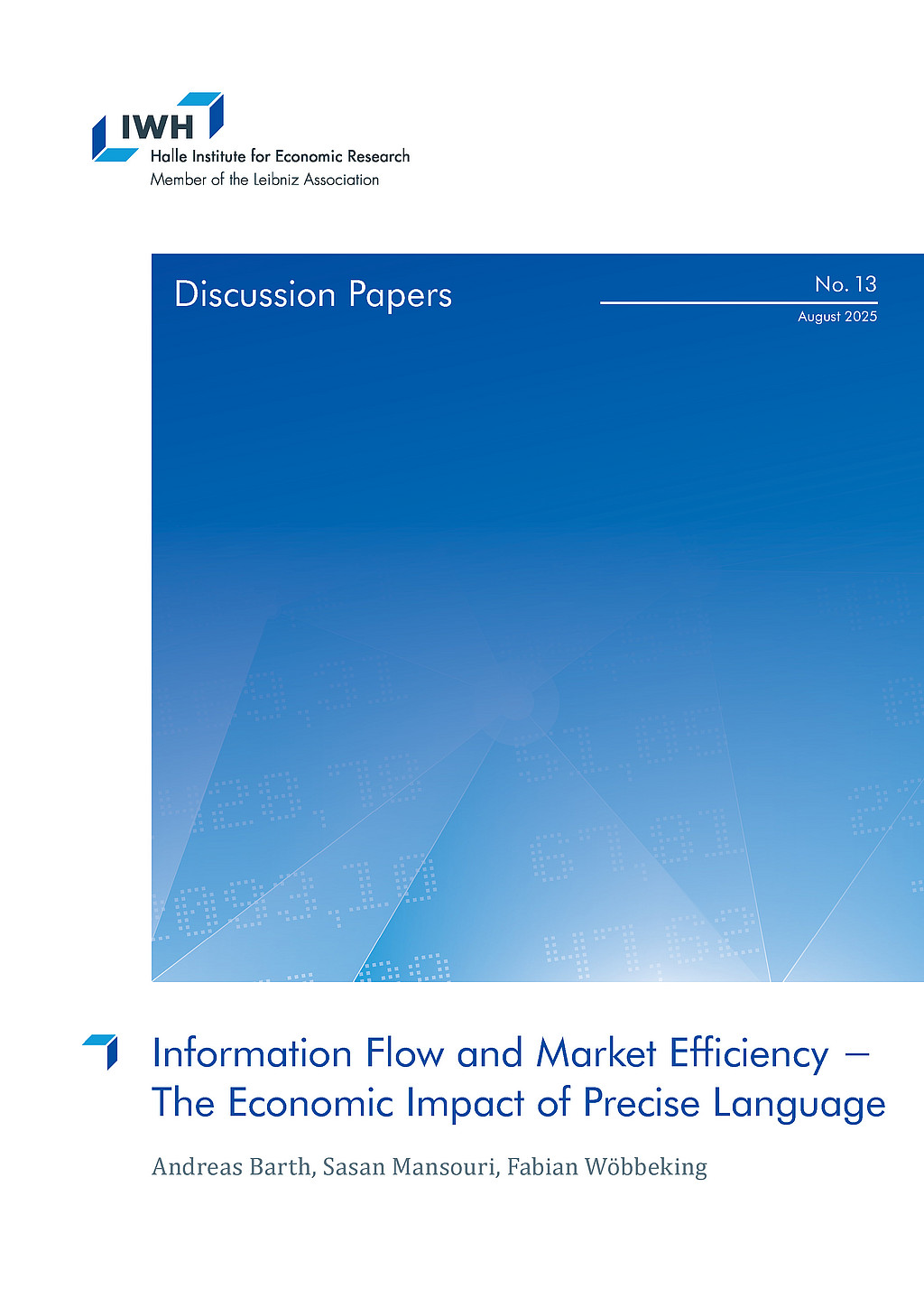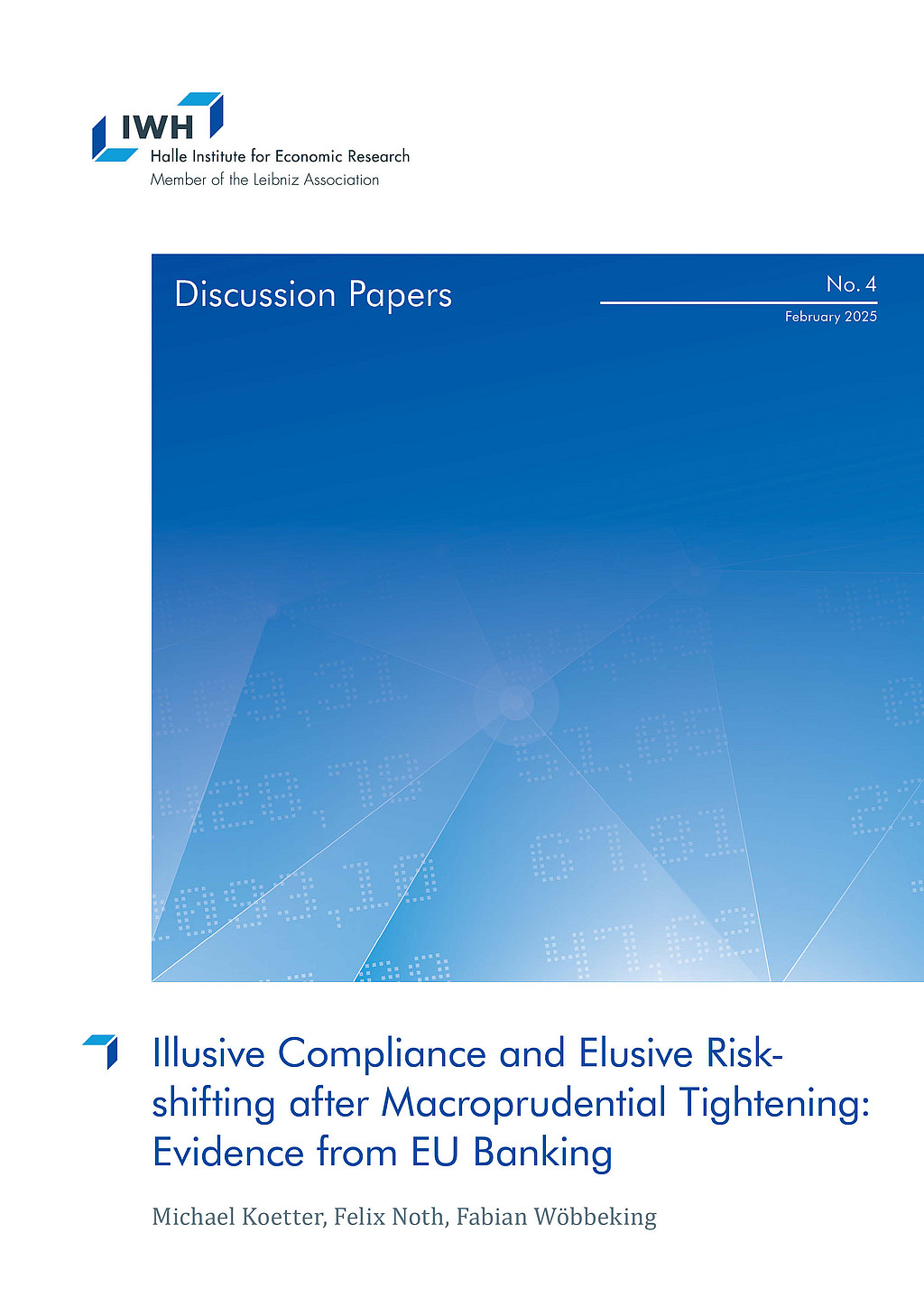Data Science in Financial Economics
The research group “Data Science in Financial Economics” focuses on developing and applying novel data science and AI methods in the field of financial economics. These methods are used to generate economic indicators from unstructured data, such as textual data, satellite imagery, or web scraping. These indicators are then utilized in econometric analysis to address pertinent questions in financial economics. Research projects of the group deploy such indicators to study, for instance:
Information frictions in financial markets, such as the quality of firm disclosures and governance.
Bank lending behaviour and risk shifting in real estate markets as a response to macroprudential regulation.
Markets’ adoption to climate change and the limits thereof.
The research group is also involved in developing IWH’s European Real Estate Index (EREI), which systematically tracks European real estate markets. EREI includes data on quoted prices, supply-side depth (number of listings), and liquidity (dwell time). Harmonized at the NUTS-3 regional level, the index supports consistent cross-country comparisons and spatial analyses for researchers, policymakers, and the public.
Research Cluster
Financial Resilience and RegulationYour contact

- Department Financial Markets
Refereed Publications

Tail-risk Protection Trading Strategies
in: Quantitative Finance, No. 5, 2017
Abstract
Starting from well-known empirical stylized facts of financial time series, we develop dynamic portfolio protection trading strategies based on econometric methods. As a criterion for riskiness, we consider the evolution of the value-at-risk spread from a GARCH model with normal innovations relative to a GARCH model with generalized innovations. These generalized innovations may for example follow a Student t, a generalized hyperbolic, an alpha-stable or a Generalized Pareto distribution (GPD). Our results indicate that the GPD distribution provides the strongest signals for avoiding tail risks. This is not surprising as the GPD distribution arises as a limit of tail behaviour in extreme value theory and therefore is especially suited to deal with tail risks. Out-of-sample backtests on 11 years of DAX futures data, indicate that the dynamic tail-risk protection strategy effectively reduces the tail risk while outperforming traditional portfolio protection strategies. The results are further validated by calculating the statistical significance of the results obtained using bootstrap methods. A number of robustness tests including application to other assets further underline the effectiveness of the strategy. Finally, by empirically testing for second-order stochastic dominance, we find that risk averse investors would be willing to pay a positive premium to move from a static buy-and-hold investment in the DAX future to the tail-risk protection strategy.
Working Papers

Information Flow and Market Efficiency - The Economic Impact of Precise Language
in: IWH Discussion Papers, No. 13, 2025
Abstract
<p>This paper examines the impact of complex yet precise language, particularly financial jargon, on information dissemination and ultimately market efficiency. As a natural laboratory, we analyze the information exchanged during earnings conference calls, where we instrument jargon with the Plain Writing Act of 2010. Our findings suggest that the Act‘s promotion of plain language usage results in a reduction in complex financial jargon for US firms. However, in contrast to the presumed benefits of accessible language, this reduction in jargon is associated with a decrease in market efficiency, implying that the Act may inadvertently hinder information flow. This finding is particularly important at the juncture where human-generated information is received by machines, which are known to be vunerable to ambiguous inputs.</p>

Illusive Compliance and Elusive Risk-shifting after Macroprudential Tightening: Evidence from EU Banking
in: IWH Discussion Papers, No. 4, 2025
Abstract
<p>We study whether and how EU banks comply with tighter macroprudential policy (MPP). Observing contractual details for more than one million securitized loans, we document an elusive risk-shifting response by EU banks in reaction to tighter loan-to-value (LTV) restrictions between 2009 and 2022. Our staggered difference-in-differences reveals that banks respond to these MPP measures at the portfolio level by issuing new loans after LTV shocks that are smaller, have shorter maturities, and show a higher collateral valuation while holding constant interest rates. Instead of contracting aggregate lending as intended by tighter MPP, banks increase the number and total volume of newly issued loans. Importantly, new loans finance especially properties in less liquid markets identified by a new European Real Estate Index (EREI), which we interpret as a novel, elusive form of risk-shifting.</p>

How to Talk Down Your Stock Performance
in: SSRN Discussion Papers, 2020
Abstract
We process the natural language of verbal firm disclosures in order to study the use of context specific language or jargon and its impact on financial performance. We observe that, within the Q&A of earnings conference calls, managers use less jargon in responses to tougher questions, and after a quarter of bad economic success. Moreover, markets interpret the lack of precise information as a bad signal: we find lower cumulative abnormal returns and a higher implied volatility following earnings calls where managers use less jargon. These results support the argument that context specific language or jargon helps to efficiently and precisely transfer information.










